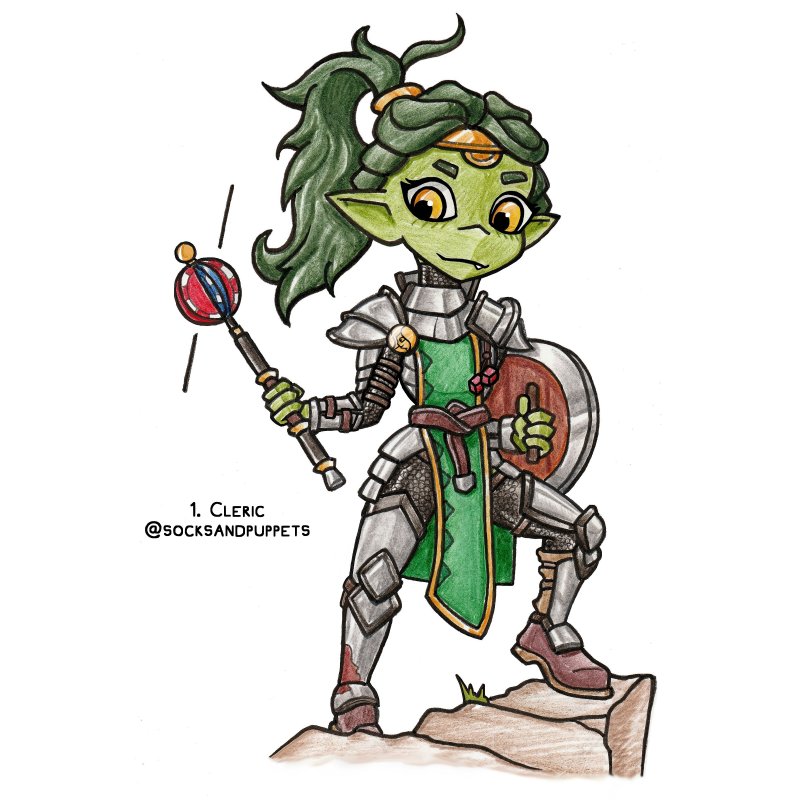

I suppose y’all can have a bonus Konsi, as a treat.

I make comics sometimes: https://linktr.ee/ahdok


I suppose y’all can have a bonus Konsi, as a treat.



Okay, it should be working reasonably now, hopefully what we’ve done will be robust enough to take us to the server move.


We’ve been having server issues for a while, I know. The main culprit has been a massive increase in scraper bots that effectively serve as a DDOS on my site. Long term they should be solved by the upcoming server migration that’s coming, but that’s a long and slow process.
I think I have a stopgap solution this week that should get it up and working well… it’s not cheap but I’m willing to put some money into making sure people can read the comics.
That depends how much experience you have, it’s mini for some people.


I am the one who snocks.


I am the one who snoots.


Well… “ethical” is a thorny subject. The underlying imagenet technology was still built on mturk, and usage still drives up the usage figures for these billion dollar art-thieves to use in their investment rounds. It’s still environmentally catastrophic compared to regular image searches, and it’s still used by proponents of the technology to normalize its use, so they can promote it to replace jobs.
A good deal of the “ethical” problems with generative-AI are baked into the technology itself… but it’s certainly more acceptable than other uses.
Unfortunately, there are plenty of people for whom this advice is really needed. I’ve a couple decades experience running drop-in games and boy do people do this for real. It’s a table-wrecker.
Crawford’s statement there makes it clear that he believes “being turned to dust” kills you. He believes it’s so obvious that he doesn’t need to explain it. That’s why his statement just takes “you’re killed” as a given.
The rules aren’t written in such a fashion as to very slowly and patiently explain every possible interpretation to you and hold-your hand to finding the correct one. They assume you have a basic reading comprehension. It’s not really WotC’s job to fix that if it’s a failed assumption.
WotC don’t issue errata for stuff like this, because they think the argument is facially stupid. If they issued errata for every facially stupid argument, then the errata document would become so large that it’d be unusable - there’s an infinite well of dumb takes that don’t require an errata to clean up.
That’s the job of your DM.
Well, regardless of anything, WotC can’t prevent this kind of argument by “writing better rules.” This isn’t the kind of “gotcha” edge case they should need to cover - that’s what the DM is for.
Rules lawyers will always appeal to the “the rules don’t explicitly state a caveat the one weird edge case I made up that’s plainly not intended” as if it’s a valid position. You can’t build a system this complex and exhaustively cover every take, and the intended mechanism for handling this is that the DM decides if they’ll accept such things or not. That depends on your DM and table culture.
As a general piece of advice, this is an extreme level of “the rules don’t explicitly say the exact thing I think they should say with the exact wording I demand of them, so therefore my take is RAW”. Most DMs would probably not want to keep running a game where this happens regularly. It’s exhausting, and they’d rather be getting on with the game, or they’d rather be crafting new NPCs and side-stories. My advice would be to talk things over with your DM away from the table to see what style of game they enjoy before deploying something like this at the table.
You specifically asked for where in RAW it says you can’t do this. Cephalotrocity correctly identified the part of RAW that’s supposed to do that for you. It’s up to you whether you want to accept that or not. It’s up to your DM if they want to play with you or not.
Given all this, you asked “where does the RAW say you can’t do this” and you’ve been shown the section that’s supposed to do that I don’t have much more advice for you - your question has been answered.
I’m going back to drawing silly comics instead.
The RAW makes a lot of assumptions about the reading comprehension of the reader though. If you want the RAW to hold your hand through understanding basic English, then you’re always going to have these problems.
Look, in your opening post, you state “Clearly, if they intended for disintegration to kill you, they’d have said so.”
They HAVE said so. Crawford has explicitly clarified this.
It’s assumed that the player is clever enough to know that dust is an object, as the player’s brain is assumed to not be made of dust.
The “present tense” argument is that “the creature can only be restored to life” describes the current state of the creature. It’s currently possible to restore the creature to life using wish, and therefore they are currently not alive. This is a plain reading of the RAW, and it’s inconsistent with the entire cohort of the rules to claim otherwise.
If that’s not good enough for you, then it’s also the intention of “reduced to a pile of grey dust” is that players will be intelligent enough to know that dust is an object, and not a creature. There’s no statblock for the dust because objects don’t have creature stat blocks.
If THAT’S not good enough for you, it’s the intention of the rules that the players use common sense when reading them.
If THAT’S not good enough for you, Crawford has explicitly stated that if disintegrate reduces you to 0hp, you’re killed - and he wrote the rule.

Any of these four arguments should be enough for a DM to be able to make a sensible ruling here, although normally I don’t rely on an appeal-to-Crawford for rulings.
If you want to play a slapstick comedy style campaign where your DM allows things to happen outside of RAW because they’re silly or fun or whatever - there’s nothing stopping you. The joy of DnD is you can play the game however you like, so long as your group are happy with that.
If this was the intent of the rules, it would be expressed in explicit, unambiguous language. They don’t write contingency rules for possible future events that haven’t happened this way, and if you interpret rules documents this way, then everything becomes an argument.
The implication of “the creature can only be restored to life by (x)…” is present tense. It applies to the current state of the game following the events described. The language “unattended objects catch fire” in fireball doesn’t mean “unattended objects in the area of a fireball will catch fire if someone sets fire to them.” it means they catch fire.
Language in rules doesn’t ambiguously cater to a potential future state of the game that may not occur. It is describing the current state of the game, like the rules do in all other situations.
I think with Tiamat, the best answer is just to go along with whatever she wants.
…Best not to worry about it.


Yeah. I also sometimes break the panel borders this way too, to avoid tangenting. Addis’ fingers in the first panel actually break out of it very slightly here.
In Making Comics Scott McCloud talks about these techniques as “fourth wall breaks” - if your characters significantly overlap the framework scaffolding of the comic itself (speech bubbles, panel borders, gutters, other panels etc) it can serve to build up dramatic intensity, especially when combined with other techniques like oversized letters, or dramatic panel shapes, or intense forshortening.
Here, the purpose is much less grandiose… I have a limited size for the panel on the page, and speech bubbles take up a LOT of real estate (especially with this much dialogue.) This forces me to squish my art into the remaining space, but I can get a little more of it out if I disrespect the panel apparatus.
Yeah, it’s ambiguous. I interpret the “you can be one foot taller or shorter” to mean you, and something like a hat or ridiculous hair can just be as large as you like so long as it still looks like an item of clothing and not (say) a billboard.
Of course, at very large sizes, something’s going to clip into the illusion every now and then, so it’ll obviously be an illusion to anyone who is around it for more than a few minutes. I’m imagining small birds trying to land on it and faceplanting into your head.